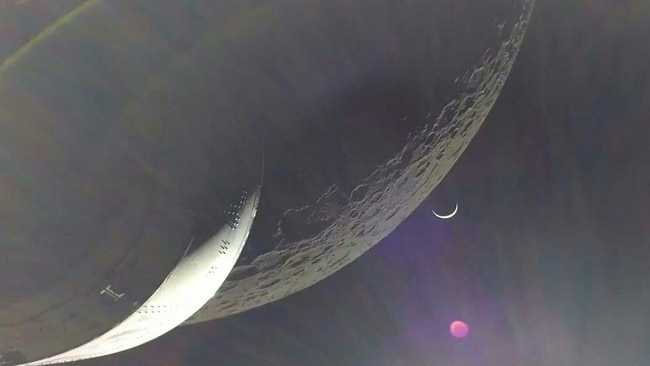Orion spaceship slingshots around moon
The Orion spaceship has made a close pass of the moon and used gravity to help whip itself back towards Earth.

The Orion spaceship has made a close pass of the moon and used gravity to help whip itself back towards Earth, marking the start of the return journey for the Artemis-1 mission.
At its nearest point, the uncrewed capsule flew less than 130km from the surface, testing manoeuvres that will be used during later Artemis missions that return humans to the moon.
The European Service Module, which powers the capsule, fired its main engine for over three minutes to put the gumdrop-shaped Orion on course for home.
It was the last major manoeuvre of the mission, which began when NASA’s mega moon rocket SLS blasted off from Florida on November 16. From start to finish, the journey should last just over 25 days.
Orion will make only slight course corrections until it splashes down in the Pacific Ocean off San Diego at 4.40am on Monday AEDT. It will then be recovered and hoisted aboard a US Navy ship.
Earlier in the mission, Orion spent about six days in “distant retrograde orbit” around the moon, meaning at high altitude and travelling opposite the direction the moon revolves around Earth. A week ago, Orion broke the distance record for a habitable capsule, venturing 450,000km from our planet.
Re-entry into Earth’s atmosphere will present a harsh test for the spacecraft’s heat shield, which will need to withstand temperatures of about 2800C – or about half the surface of the sun.
Under the Artemis program – named for the sister of Apollo in Greek mythology – the US is seeking to build a lasting presence on the moon in preparation for an onward voyage to Mars.
Artemis-II will involve a crewed journey to the moon, once again without landing.
The first woman and next man are to land on the lunar south pole during Artemis-III, which is set for no sooner than 2025, though likely significantly later given timeline delays.


